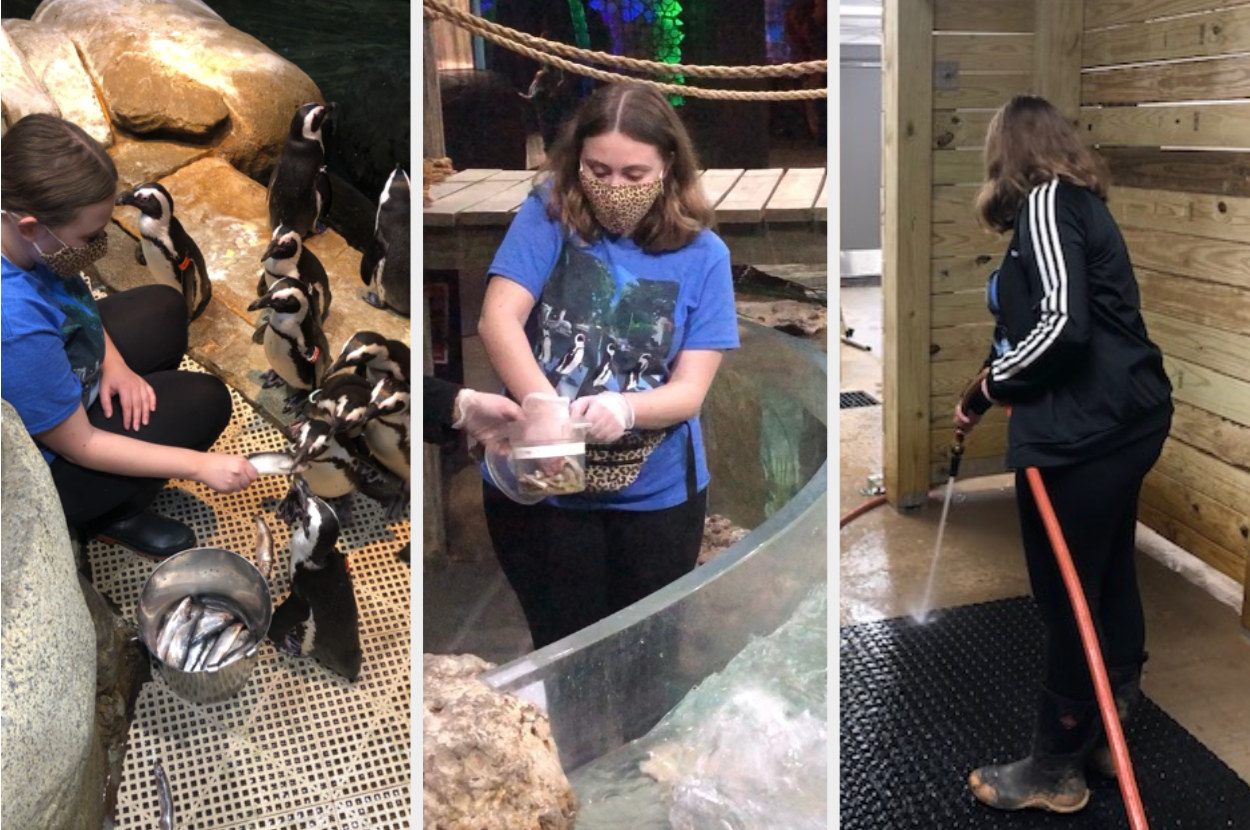Hi! My name is Hannah, and I've lived in two zoos.

I know you're probably thinking, "Whaaat?" I get it — it's a weird fun fact for me to spring on you like that! But I've grown up around animals my entire life. My parents both have backgrounds in biology, so I've learned about and encountered many animals over the years. Though I don't live in a zoo now, animal care and conservation are still near and dear to my heart.

I spent a day at the Greensboro Science Center as a keeper and aquarist, where I came face-to-face with animals from around the world and learned about various wildlife conservation initiatives in place to protect and preserve these incredible species.
I started my day by visiting some of the newest additions to the Greensboro Science Center — pygmy hippos and an okapi. I was promptly handed a shovel and began scooping copious amounts of poop. So. Much. Poop.
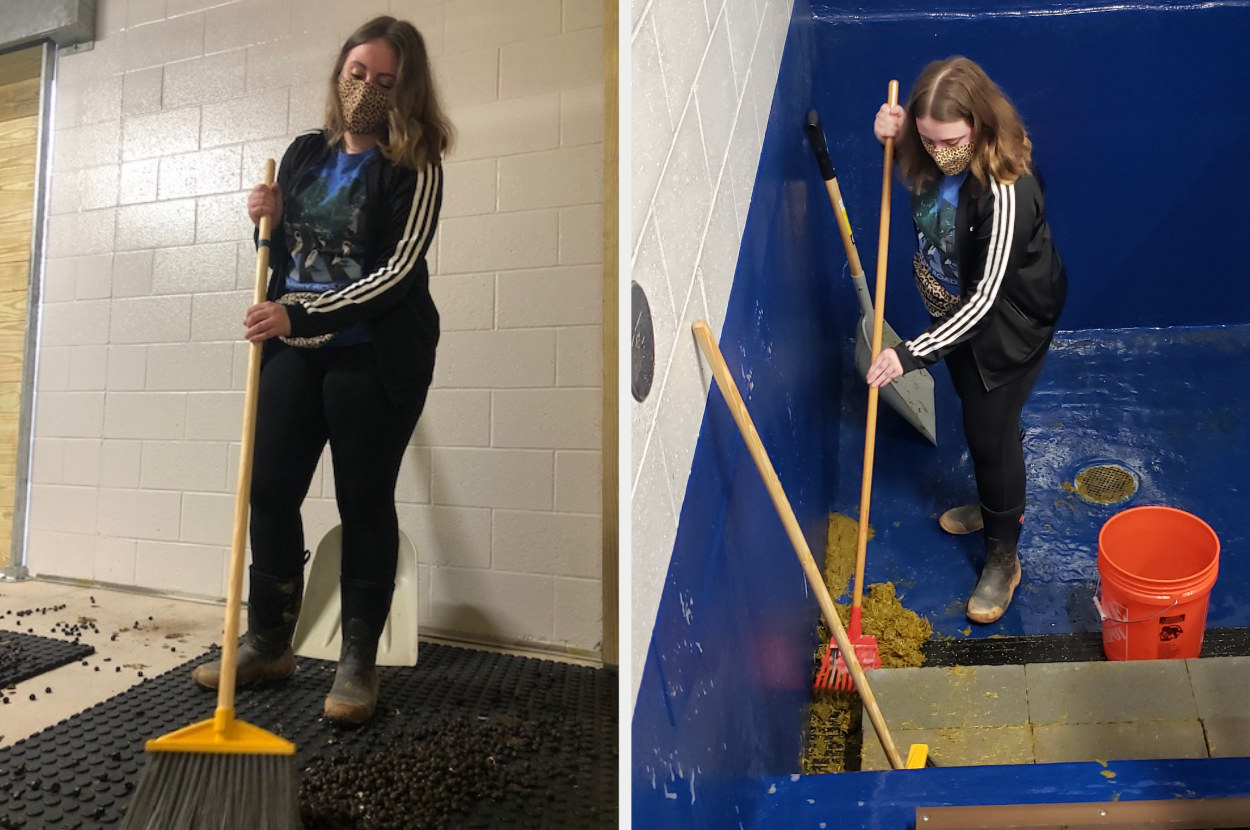
Pygmy hippos are a smaller breed of hippopotamus native to West Africa. They are endangered, primarily due to habitat loss. The Greensboro Science Center's new pair, Holly and Ralph, are a part of the Species Survival Plan. This program designates breeding pairs to establish a stable gene pool in order to, someday, restore the species back into the wild.
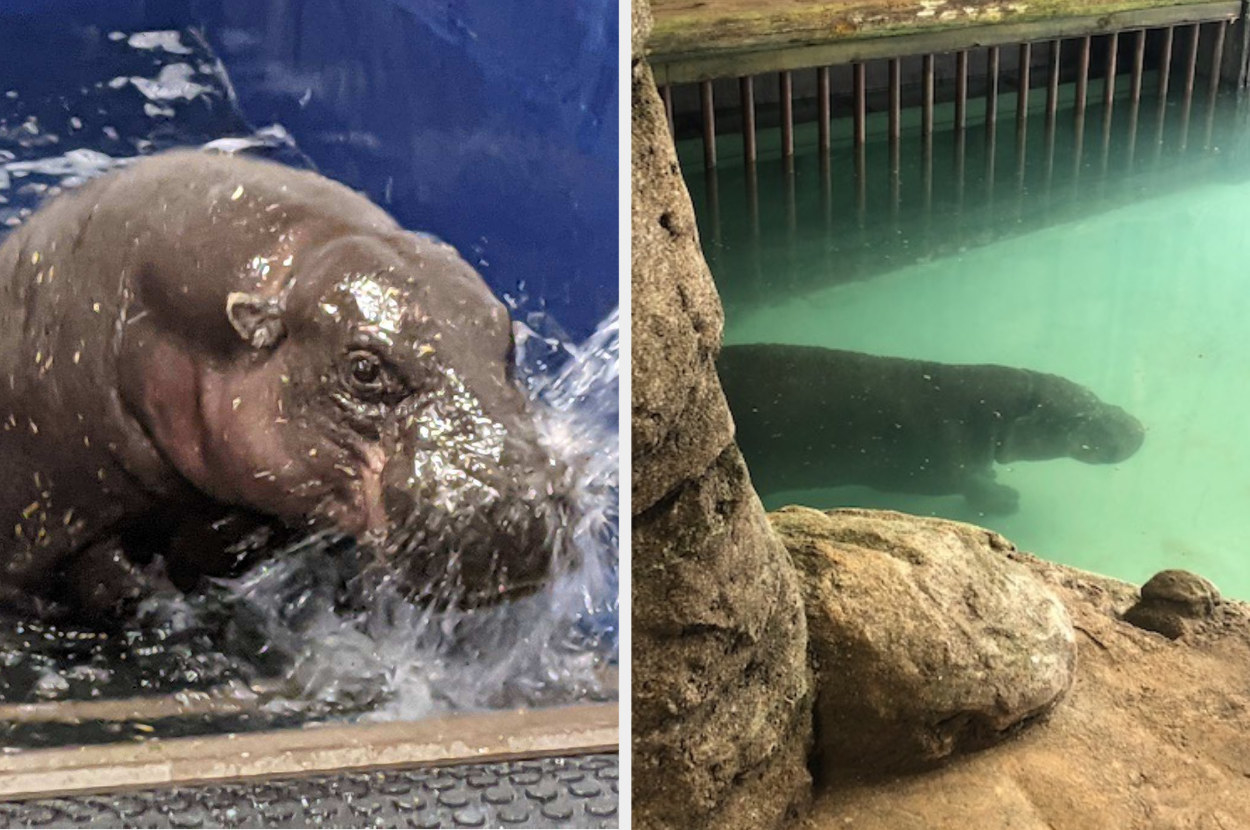
Okapi are an endangered species native to the Democratic Republic of Congo. They are relatives to giraffes and love snacking on tree branches. This adorable okapi is named Bakari, and he loves it when you pet his velvety head.
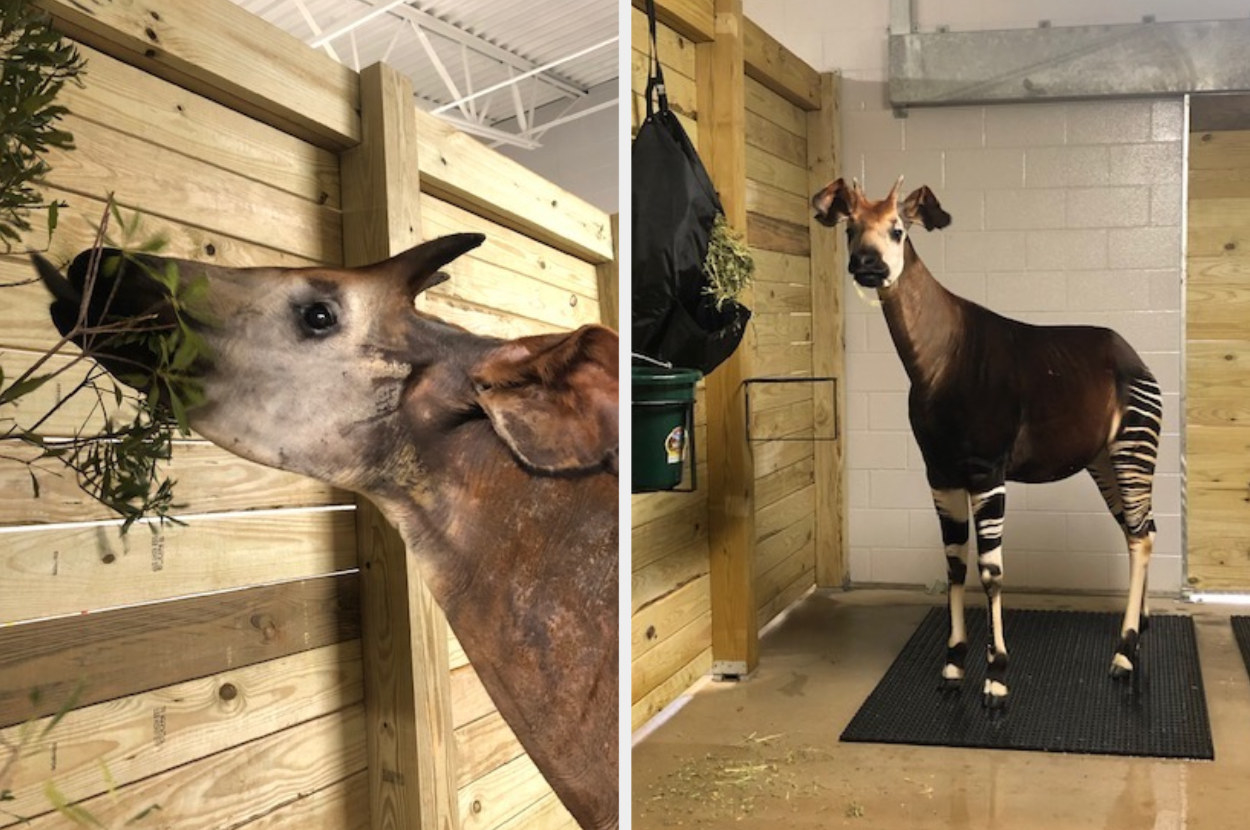
Next, it was time to visit the center's giant anteater, Eury. Giant anteaters are native to Central and South America and typically live to be 14–16 years old. Eury is 20, nearly 21, so he's a pretty old dude. Giant anteaters are a vulnerable species. The biggest threat to their survival in the wild is habitat loss.

Despite his old age, Eury still perks right up if you bring him a banana. Since giant anteaters have no teeth and limited jaw mobility, I had to really mush the banana in my hands for him to slurp up. Oh yeah, his tongue is also TWO FEET LONG. He really likes shooting that thing up the sleeve of your shirt when you're least expecting it, too.
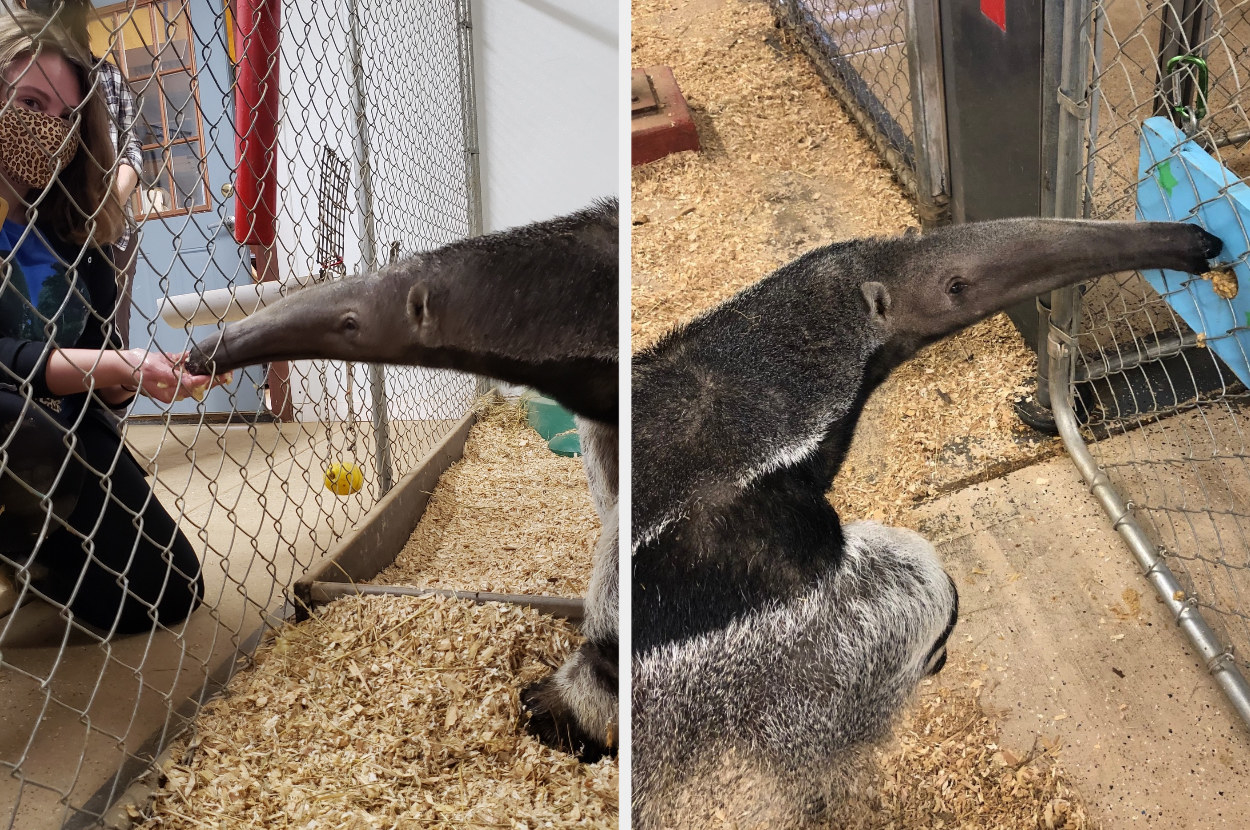
Then, it was off to the aquarium! The first animal I visited in the aquarium was the giant Pacific octopus, Peanut. She was very gentle and lightly suctioned onto my fingers and hands. I fed her a soft shell crab for lunch, and she seemed quite content. Though this species has a rather short lifespan, the females can lay tens of thousands of eggs!
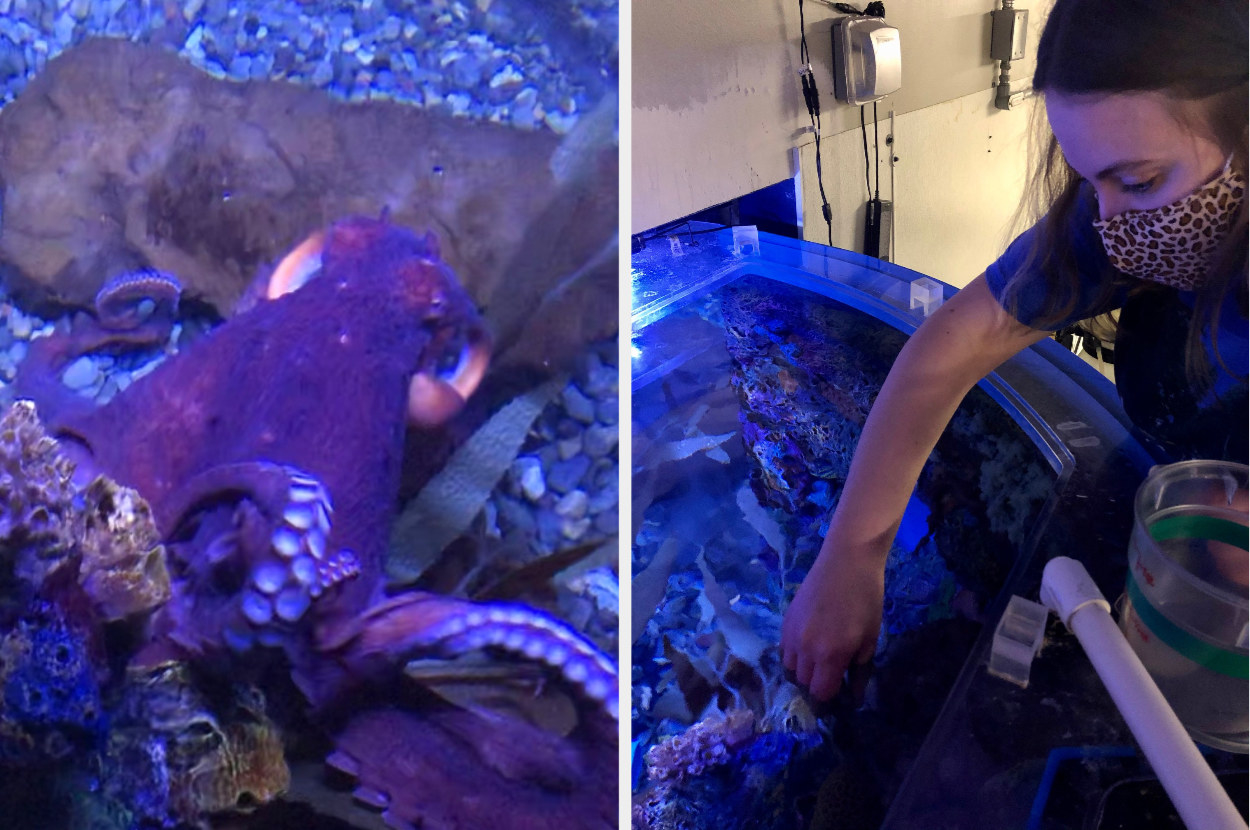
Then it was time to give the seahorses their lunch. I got to get up close and personal with the big belly and lined seahorses. Yes, the males do carry the babies! The Greensboro Science Center is part of a breeding program designed to return their seahorses' offspring directly to the wild.
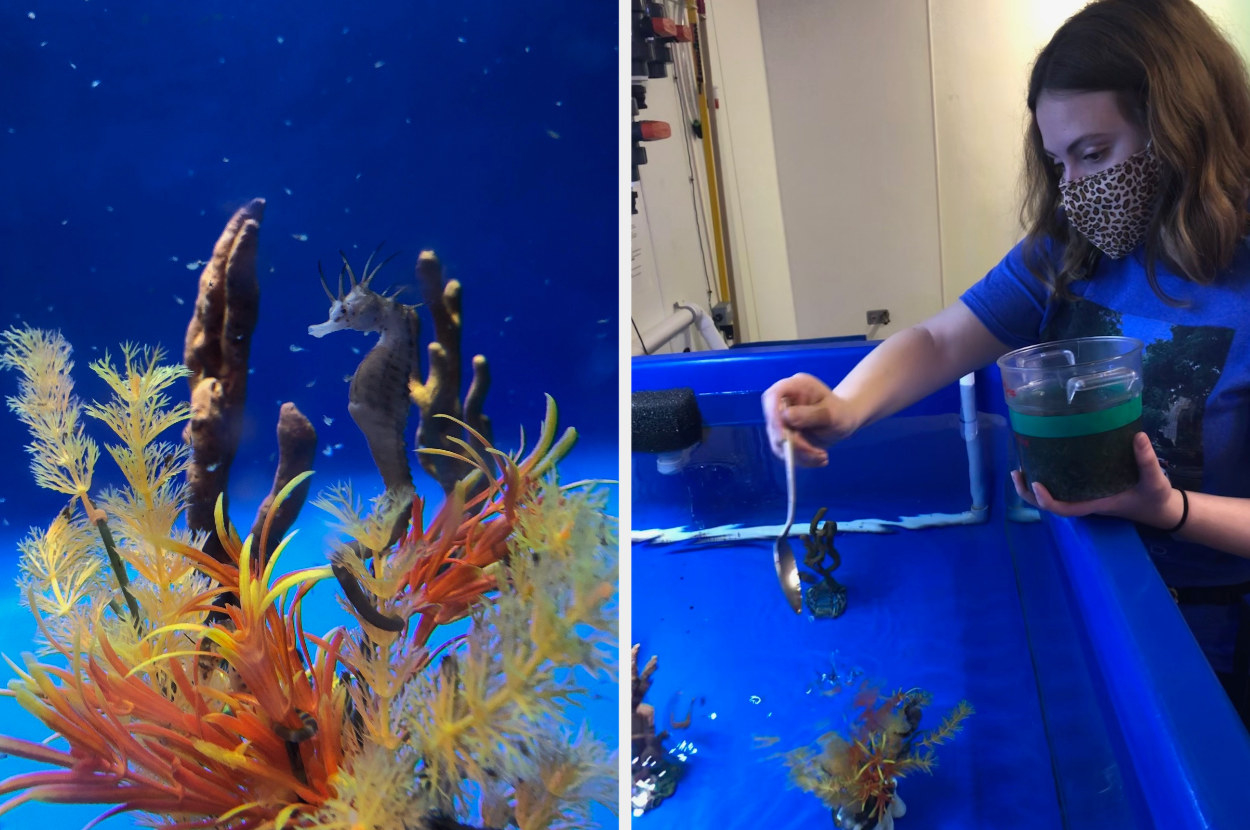
It was then time for me to get cozy with a giant isopod. They are found in the depths of the Atlantic, Pacific, and Indian Oceans. They scavenge for dead things and may also eat slow-moving creatures. Sometimes, algae begins to build up on their backs. When this happens, an aquarist will grab a toothbrush and gently brush it off for them.
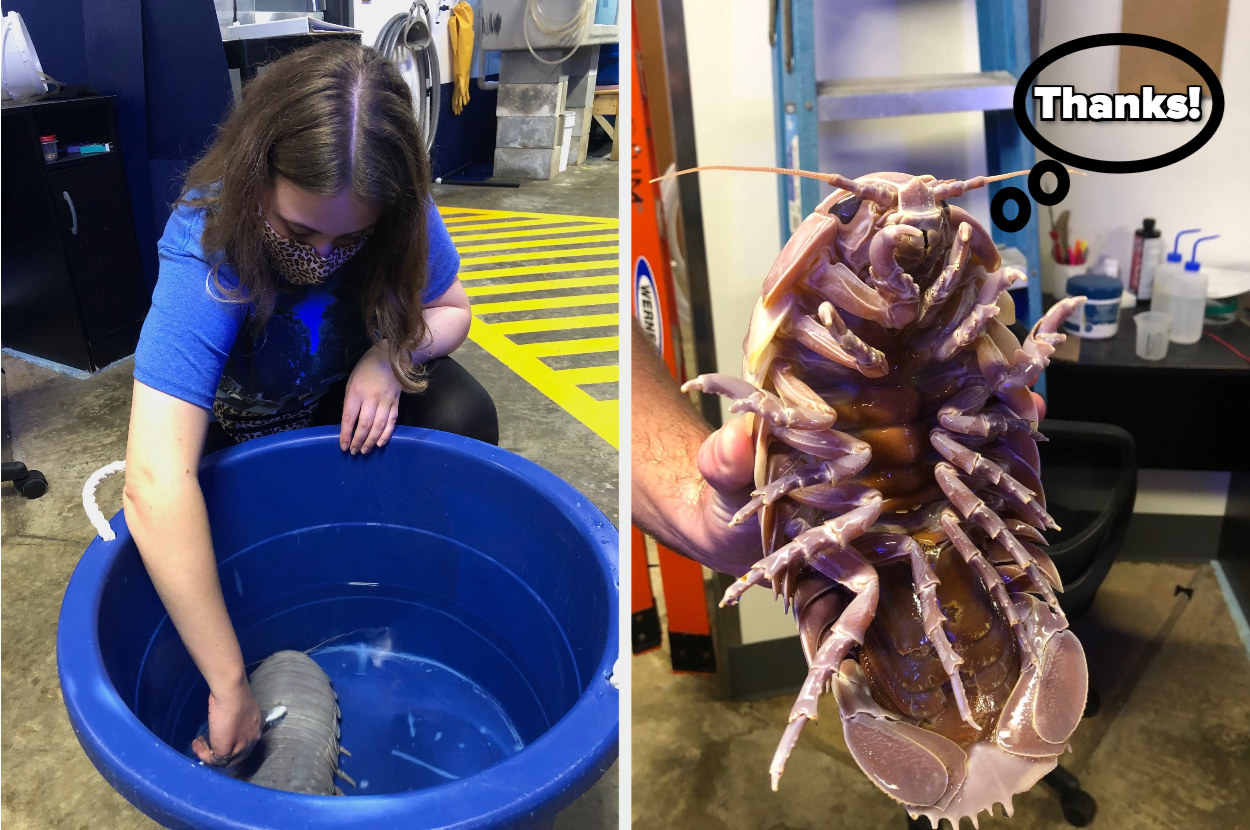
Soon enough, it was feeding time for the stingrays. We started with the rays that, pre-COVID, were a part of the touch tank. These cownose rays can be found off the coast of New England and as far down as southern Brazil. Their mouths are on their undersides, so I had to hold their food deep enough in the water for them to suck it out of my fist as they swam by. They get excited at feeding time, which means lots of splashing!
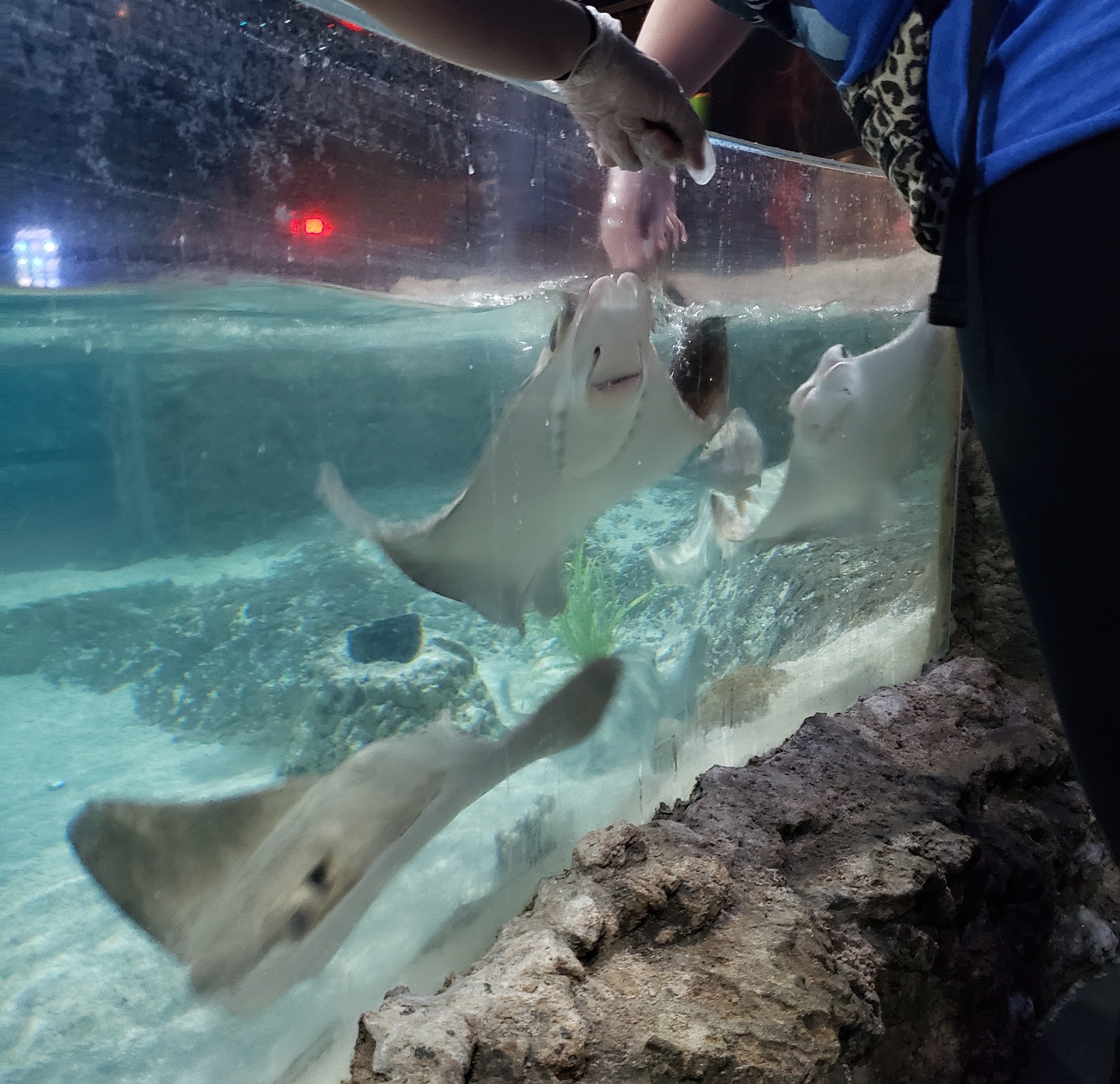
The next ray we fed was the center's spotted eagle ray, Silver Surfer. This ray lives in a large tank with other species, but gets placed in a holding area to eat because he likes to take his time. He's also target trained, meaning he responds to a certain target placed in the water, along with the sound of a clicker. These signals help the aquarists feed him and get him comfortable with human touch for vet procedures.
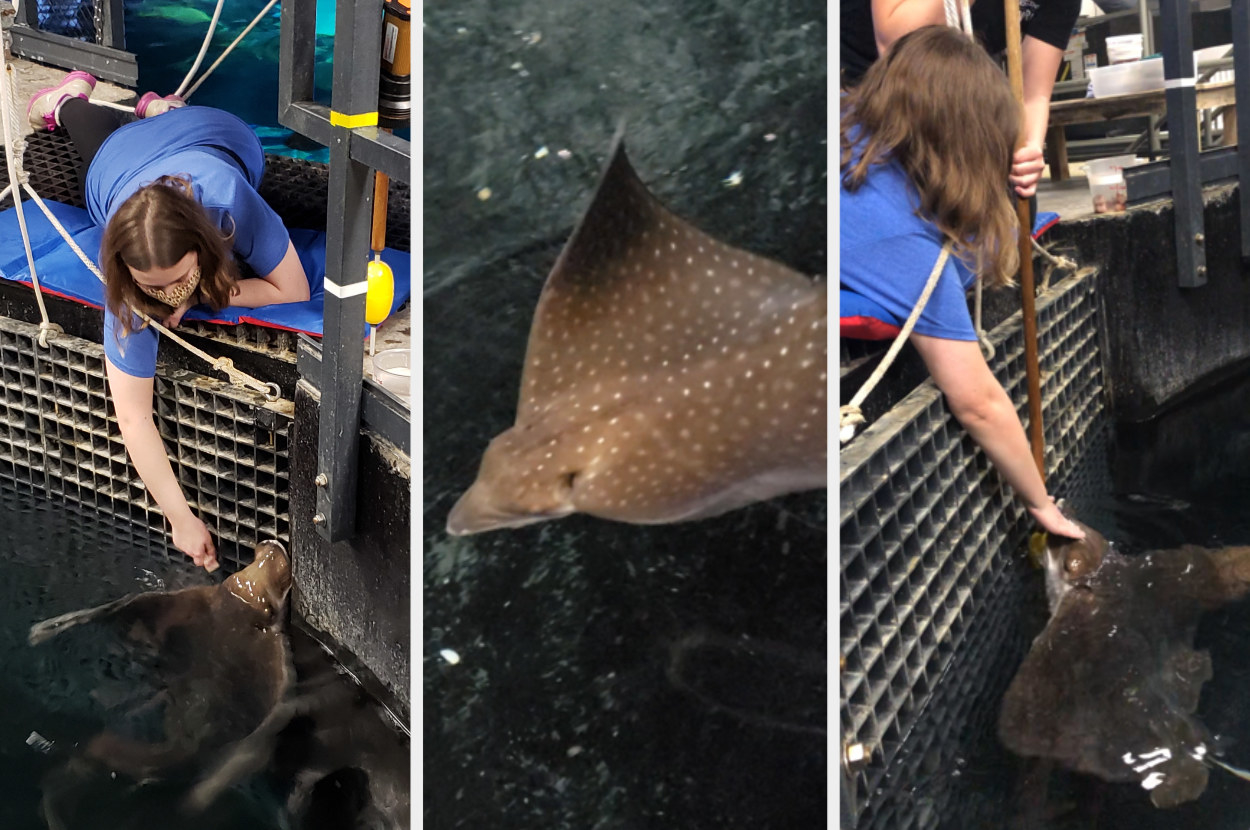
We then fed the two sandbar sharks, Mags and Lex, and the blacknose shark, Peter. They live in a large tank together with many other species. These three are also target trained, meaning they follow certain colored targets to their designated feeding areas.
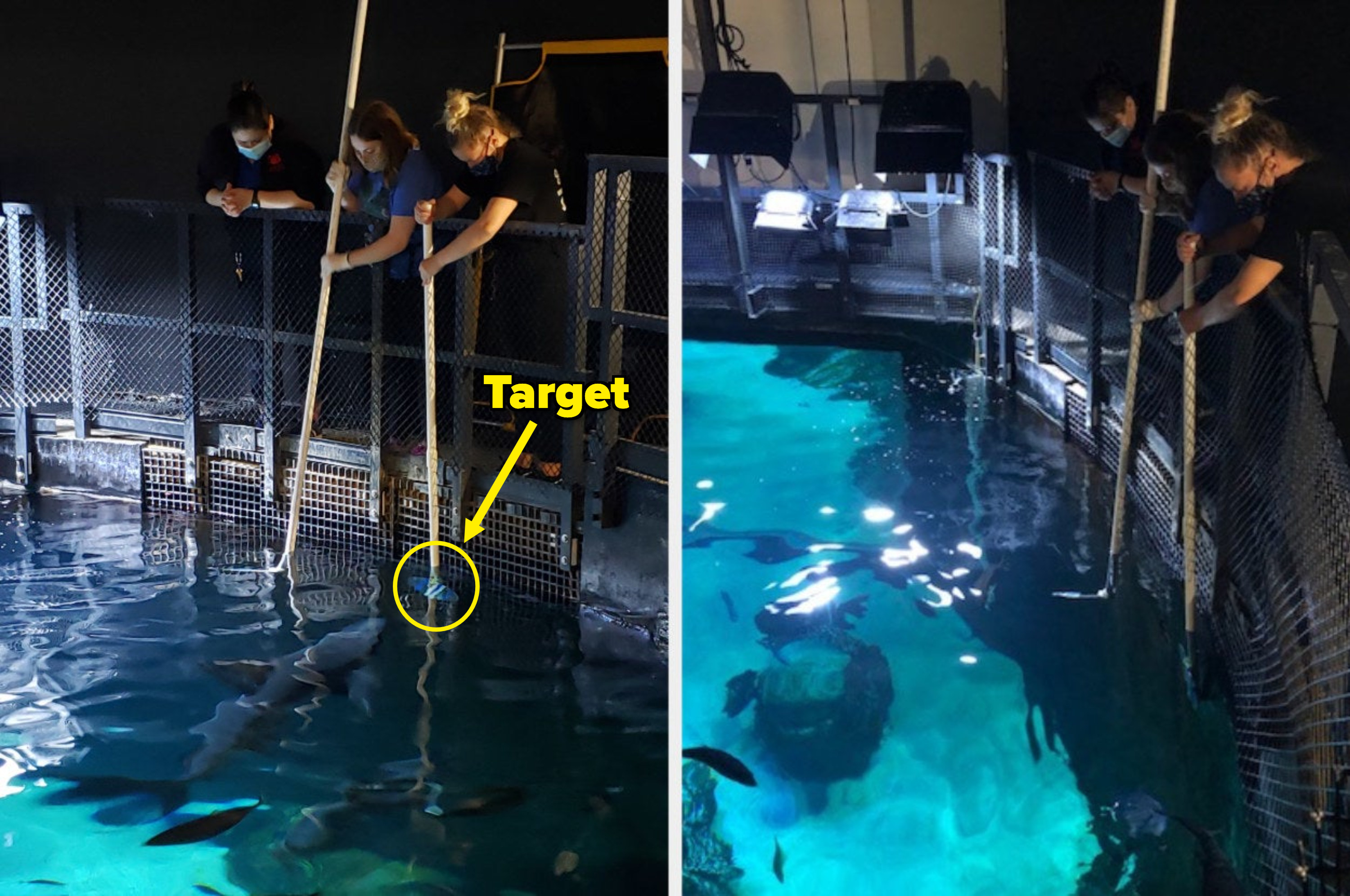
We also fed the green moray eels, but that wasn't quite so seamless. You see, there are some puffer fish that also live in this tank, and they are shameless. They enjoy eating and will steal food whenever they can. So, a puffer fish did swoop in and get a little bit of the eel's meal, but rest assured, the eel still got what it needed!

My final task of the day was perhaps one of the greatest things I've ever done. I got to feed PENGUINS! The center has an adorable colony of African penguins, and I got to sit in their enclosure with a bucket of fish and get pecked and prodded by their cute faces! The arm bands depict their names and are color-coded based on breeding pairs. African penguins are extremely endangered, so they are also part of the Species Survival Plan, which increases their population and genetic diversity. The center has hatched 21 new penguin chicks since opening the aquarium in 2013.
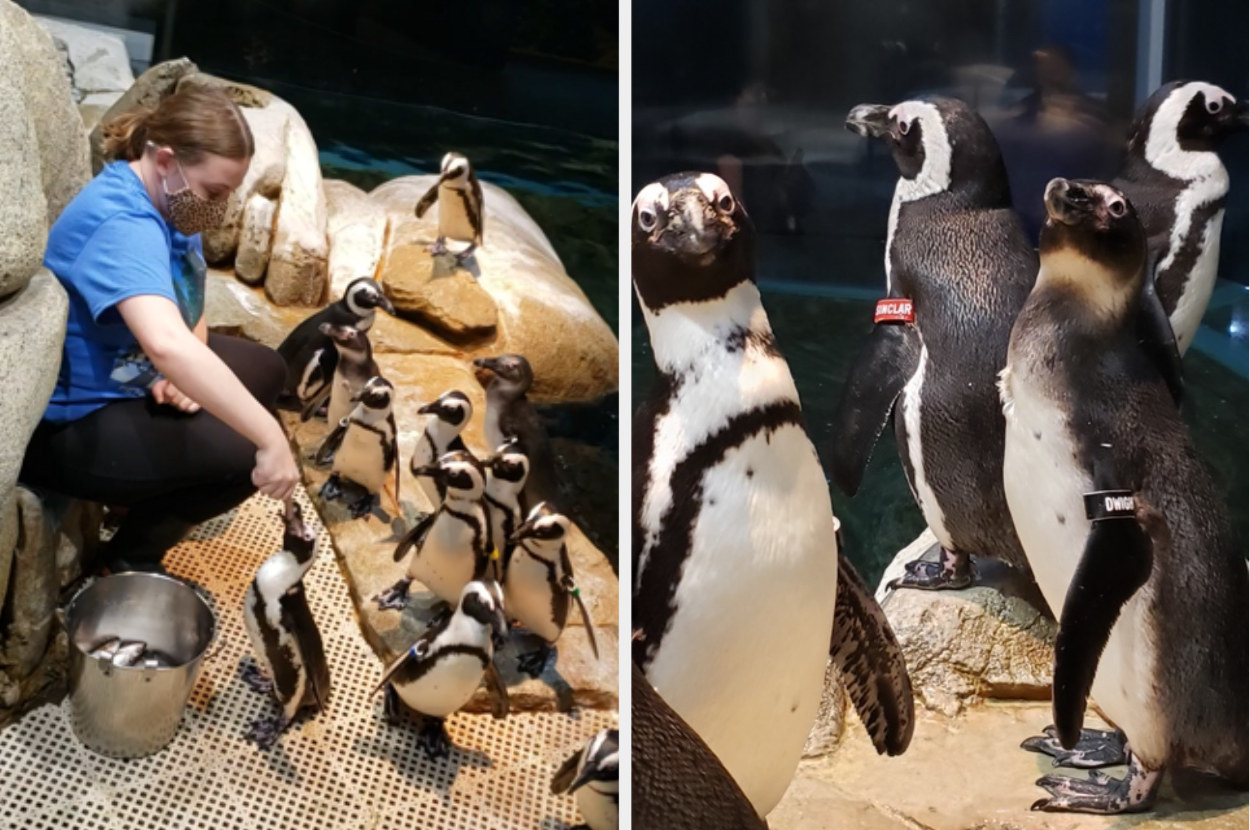
Fun fact: African penguins are also known as "jackass penguins" because of the loud, donkey-like sounds they make. And boy, were they hooting and hollering when I brought the fish bucket out.
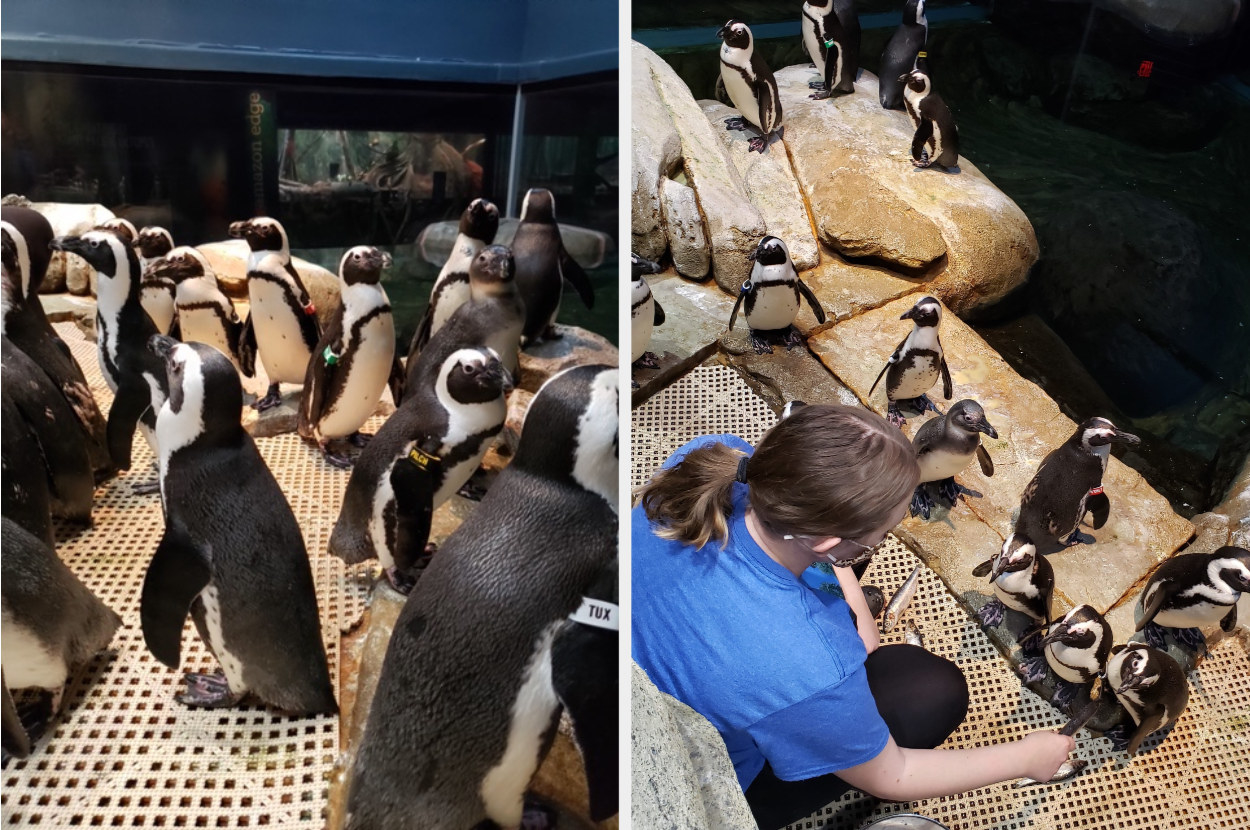
My day at the Greensboro Science Center was both exciting and educational. I got a behind-the-scenes look at how each individual animal is cared for by the hardworking staff. The Greensboro Science Center is one of only 14 AAM and AZA-accredited facilities in the country, making it a top-tier organization for animal care and safety, education, and wildlife conservation.
